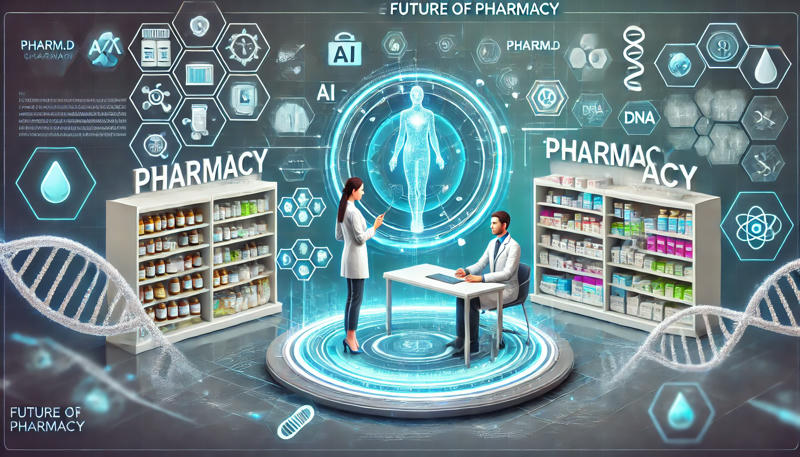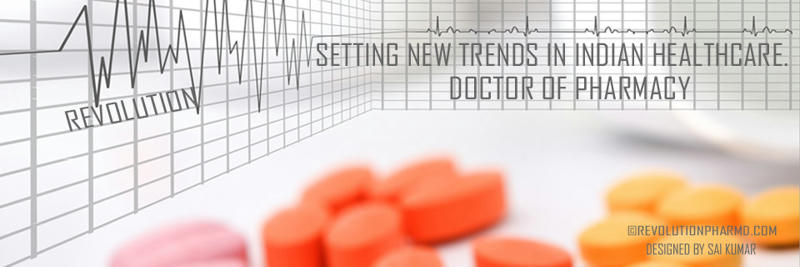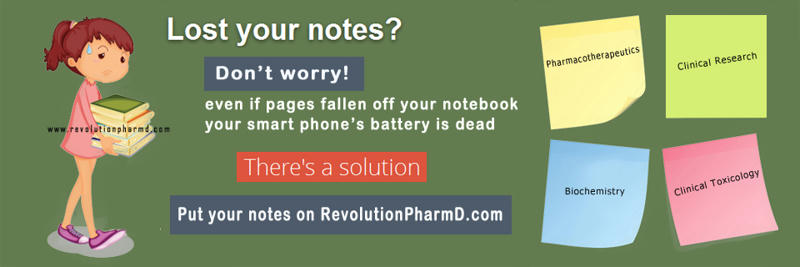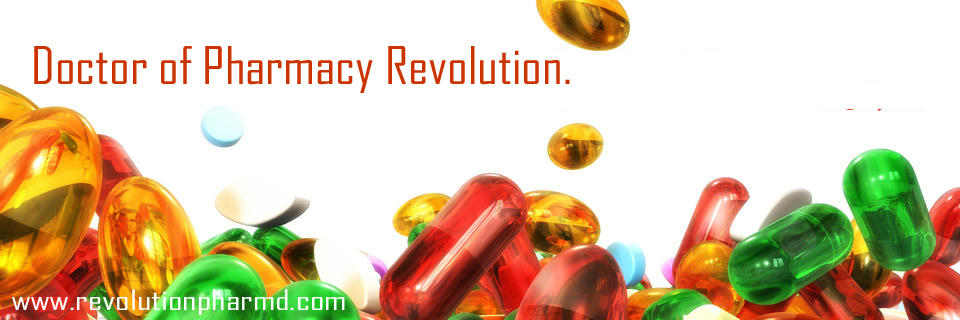Difference Between Abuse and Dependence
Abuse vs Dependence
Abuse and dependence is more related to drugs. Sometimes abuse and dependence are
used interchangeably. Though these two terms refer to drug usage, they
are different. Abuse can be defined as the inappropriate usage of a
drug. Dependence can be defined as an addiction to drugs.
While abuse is a severe desire to get a particular drug, dependence can be termed as the body’s physiological need to have the drug.
Taking of drugs
without a doctor’s prescription can be termed as drug abuse. There are
many abused drugs that are obtained from over the counter. A person
can become drug dependent when he or she continues to use the drug.
This means that going beyond the prescribed dosage of drug can lead to
drug dependence. It can also be seen that drug dependence can lead to
behavior problems, and also cause physical harm.
When talking about drug abuse, there is
no strong desire or compulsion to continue with the drug. On the other
hand, a person has a strong desire to continue with the drug usage when
he is dependent. This person is emotionally addicted to the drug.
In the case of drug abuse, it is easier
for people to get out of it, but it is harder for people who have become
dependent to get out of the clutches of drugs.
While drug abuse is more related to
the physical aspect, drug dependence is related more to physiological
aspects. In drug abuse, people will only have a physical craving for
the drug, and think that it is needed for their bodily functions. On
the contrary, persons who are dependent on drugs have an emotional or
psychological need for the drug.
Summary:
1. Abuse can be defined as the inappropriate usage of a drug. Dependence can be defined as an addiction to drugs.
2. When talking about drug abuse,
there is no strong desire or compulsion to continue with the drug. On
the other hand, a person has a strong desire to continue with the drug
usage when he is dependent.
3. While abuse is a severe desire to
get a particular drug, dependence can be termed as the body’s
physiological need to have the drug.
4. In drug abuse, people will only
have a physical craving for the drug, and think that it is needed for
their bodily functions. On the contrary, persons who are dependent on
drugs have an emotional or psychological need for the drug.
Difference Between Pneumonia and Bronchitis
Pneumonia vs Bronchitis
Both bronchitis and pneumonia are
serious diseases affecting the lower respiratory tract. They can lead to
a lot of discomforts and, if left untreated, may cause other serious
conditions. There are a number of differences between the two.
Understanding these differences will help you identify the two.
Symptoms
Pneumonia manifests itself in the form of high fever, cough and chills. It is accompanied by rapid breathing and a certain amount of wheezing. The patient often complains of chest pain. Some patients also feel extremely exhausted and nauseous. The symptoms of viral pneumonia often resemble those of ordinary flu. There are chills and high fever. It is often accompanied by chattering teeth. It may also produce sputum that is green, yellow or rust colored. Pneumonia becomes apparent when the patient experiences a shortness of breath.
Pneumonia manifests itself in the form of high fever, cough and chills. It is accompanied by rapid breathing and a certain amount of wheezing. The patient often complains of chest pain. Some patients also feel extremely exhausted and nauseous. The symptoms of viral pneumonia often resemble those of ordinary flu. There are chills and high fever. It is often accompanied by chattering teeth. It may also produce sputum that is green, yellow or rust colored. Pneumonia becomes apparent when the patient experiences a shortness of breath.
Bronchitis manifests itself as a cough
with headache, chills and a slight fever. A patient may also experience a
shortness of breath.
Different reasons
Pneumonia and bronchitis are caused by different factors. Bronchitis occurs when there is an inflammation of the bronchial tubes. It may be caused by a number of factors, including a bacterial or viral infection. It is also caused by irritation originating from pollution and smoke. Bronchitis may be chronic or acute in nature. Chronic bronchitis occurs over a period of time. Acute bronchitis may last for a few days. However, it is usually cured with the help of antibiotics. Pneumonia is caused by an infection of the lungs. It may be caused by bacteria, fungi or by a virus. It usually affects people over the age of 65, or people who have had their immune systems compromised.
Pneumonia and bronchitis are caused by different factors. Bronchitis occurs when there is an inflammation of the bronchial tubes. It may be caused by a number of factors, including a bacterial or viral infection. It is also caused by irritation originating from pollution and smoke. Bronchitis may be chronic or acute in nature. Chronic bronchitis occurs over a period of time. Acute bronchitis may last for a few days. However, it is usually cured with the help of antibiotics. Pneumonia is caused by an infection of the lungs. It may be caused by bacteria, fungi or by a virus. It usually affects people over the age of 65, or people who have had their immune systems compromised.
Differences in treatment
The treatment for bronchitis is relatively simple. Once the doctor has identified the reasons for the infection, he will put you on a course of antibiotics. You will be advised rest and you will need to avoid pollution and smoke. Pneumonia is more of a serious affliction. If you have been diagnosed with this disease, you will be prescribed a strong antiviral or antibiotics. If the condition worsens, the doctor may advise that the patient be removed to the hospital and additional breathing apparatus installed. You may be hospitalized anywhere between one and three days, depending on the seriousness of your condition.
The treatment for bronchitis is relatively simple. Once the doctor has identified the reasons for the infection, he will put you on a course of antibiotics. You will be advised rest and you will need to avoid pollution and smoke. Pneumonia is more of a serious affliction. If you have been diagnosed with this disease, you will be prescribed a strong antiviral or antibiotics. If the condition worsens, the doctor may advise that the patient be removed to the hospital and additional breathing apparatus installed. You may be hospitalized anywhere between one and three days, depending on the seriousness of your condition.
Pneumonia is a serious medical condition
and requires urgent medical attention. If the patient suffers from
difficulties in breathing and begins throwing up sputum, you should seek
immediate medical attention.
Summary:
1. Patients suffering from pneumonia
will have a high fever, difficulties in breathing and wheezing.
Bronchitis has similar symptoms, but the patients have a lower
temperature.
2. Bronchitis is caused by an inflammation of the bronchial lining. It may occur due to a bacterial or viral infection. However, pneumonia is caused by an infection of the lungs.
3. The treatments for the two also vary. Bronchitis may be treated by antibiotics. However, a patient suffering from pneumonia may have to be hospitalized. He is generally advised very strong antibiotics or an antiviral.
2. Bronchitis is caused by an inflammation of the bronchial lining. It may occur due to a bacterial or viral infection. However, pneumonia is caused by an infection of the lungs.
3. The treatments for the two also vary. Bronchitis may be treated by antibiotics. However, a patient suffering from pneumonia may have to be hospitalized. He is generally advised very strong antibiotics or an antiviral.
“PHARMACY THE CHALLENGE “-Roger Walker
in healthcare. As a consequence this puts the pharmacist at the heart of patient care and presents both opportunities and responsibilities.
Opportunities include direct patient contact and the
chance to understand the patient in the context of their own background, guide the
choice of therapeutic selection or formulation and provide appropriate,
personalized support to facilitate patient medication adherence.
But medicine use also has a down side. It has the
potential to be fraught with problems that include complexities of selecting the most
appropriate medicine,dose selection and administration, medicine formulation
and stability, the
potential to interact with other medicines, poor patient adherence and a changing harm-benefit risk profile.
As a consequence the mantra of promoting safe, appropriate
and cost-effective prescribing that respects patient choice and promotes
adherence is a continuous challenge. This is true whether we are students or
qualified pharmacists and requires a sustained enthusiasm to question and learn, and
a commitment to
continually update our knowledge and practice.
The emerging dimension that we also consider alongside the
patient focused approach is the public health perspective. No longer is it
acceptable to ignore the\ population based impact of any health care intervention whether this is linked to the inappropriate and wasteful use of healthcare resources
or involves overuse of
a given medicine. This is well illustrated by the
restrictions we must now place on the use of antibiotics to prevent the emergence of
antibiotic-resistance to preserve their effectiveness for use in those most in
need.
Whether we practice in a patient facing setting, work in
public health or combine the two dimensions, the opportunity for pharmacy to make a
significant and valued
contribution to healthcare and society has never been greater. This is our challenge.
Roger Walker
Chief Pharmaceutical Officer, Welsh Assembly
Government, U.K.
Goals for PharmD Students — Joseph DiPiro, PharmD,USA.
Training of pharmacists at the doctor of pharmacy (PharmD) level
is expanding around the world and has greatly increased clinical practice of
pharmacists. Pharmacy students now spend much more time in patient-centered activities,experiential
training,and in courses that teach therapeutics.While a good, clinically based curriculum is necessary for
success as a pharmacy practitioner the curriculum alone is not sufficient. In
these modern times, health care needs are quite extensive and the complexity of
health care systems is often daunting.
“To be a truly successful pharmacy practitioner it is important that
students accept
personal goals to clearly recognize the health needs and
concerns of their society.”
Recognition of these needs will keep one connected to and
focused on the most important issues. In most countries the biggest societal
concerns related to medications are cost (can they afford their medicines),
access to medications (are they available),effectiveness (will they work), and
safety (will they cause an adverse effect). Pharmacists will always have an
important role in health care if they focus on these major issues. Pharmacy
students who are committed to addressing these major issues will need more than
factual knowledge that is gained in lecture classes.
To be effective in addressing these issues pharmacy students should
also have personal goals to gain the skills necessary to solve these problems,
namely, communication skills, knowledge of health care systems, information
technology skills, business skills, or leadership skills. Most people will not possess
a high level for all of these skills but it is possible to advance the
profession and health care by acquiring proficiency in some of these areas.
“PharmD students have a lot to learn and acquiring the right
skills assures the best use of your knowledge.”
Joseph T. Dipiro
Professor and Executive Dean
South Carolina College of Pharmacy
USA.
Pharm.D Patient care Mnemonics: WWHAM, ASMETHOD, ENCORE and SIT DOWN SIR
A mnemonic is sometimes used by pharmacists to
gather information to help them in diagnosing a patient's presenting
complaint. Caution should be exercised when using a mnemonic due to the
fact that a mnemonic may fail to obtain all necessary information that
is needed before diagnosing the patient's presenting complaint
accurately and further questioning may be necessary depending on the
patient's response to questions. Listed below are some of the mnemonics
used when responding to symptoms.
WWHAM
| W | Who is the patient |
| W | What are the symptoms |
| H | How long have the symptoms been present |
| A | Action taken |
| M | Medication being taken |
ASMETHOD
| A | Age/appearance |
| S | Self or someone else |
| M | Medication |
| E | Extra medicines |
| T | Time persisting |
| H | History |
| O | Other symptoms |
| D | Danger symptoms |
ENCORE
| E | Explore |
| N | No medication |
| C | Care |
| O | Observe |
| R | Refer |
| E | Explain |
SIT DOWN SIR
| S | Site or location of a sign/symptom |
| I | Intensity or severity |
| T | Type or nature |
| D | Duration |
| O | Onset |
| W | With (other symptoms) |
| N | Annoyed or aggravated by |
| S | Spread or radiation |
| I | Incidence or frequency |
| R | Relieved by |
BIOCHEMISTRY MNEMONICS
Essential Amino Acids
- PriVaTe TIM HALL
- Phe, Val, Thr, Trp, Ile, Met, His, Arg, Leu, Lys
Urea Cycle
- Ordinarily, Careless Crappers, Are Also Frivolous About Urination.
- Ornithine, Carbamoyl, Citrulline, Arginosuccinate, Aspartate, Fumarate, Arginine, Urea.
Cell division
- Prophase, metaphase, anaphase, telophase.
- "People Meet And Talk."
In the Phasted State
- Phosphorylate Phosphorylation cascade active when blood glucose low.
- DNA expression into mature mRNA
- Exons expressed, Introns in the trash.
- Pyrimidines are CUT from purines.
- Pyrimidines are Cytosine, Uracil, Thiamine and are one ring structures.
- Purines are double ring structures.
Porphyrias:
acute intermittent porphyria symptoms 5 P's:
Pain
in abdomen
Polyneuropathy
Psychologial
abnormalities
Pink
urine
Precipitated
by drugs (eg barbiturates, oral contraceptives, sulpha drugs)
BUN:creatinine elevation: causes ABCD:
Azotremia
(pre-renal)
Bleeding
(GI)
Catabolic
status
Diet
(high protein parenteral nutrition)
G6PD:
oxidant drugs inducing hemolytic anemia AAA: Antibiotic (eg: sufamethoxazole)
Antimalarial
(eg: primaquine)
Antipyretics
(eg: acetanilid, but not aspirin or acetaminophen)
Vitamin B3
(niacin, nicotinic acid) deficiency: pellagra
The 3 D's of pellagra: Dermatitis Diarrhea Dementia
· Note vitamin
B3 is the 3 D's.
Tangier's
disease: hallmark
"Tangierene
tonsils":
Hallmark is
large orange tonsils.
· Important
clinical note: there is no increased risk of atherosclerosis, just like
eating tangerenes.
Na+/K+
pump: movement of ions and quantity
K+ and in each consist of 2 characters, so so 2 K+ are pumped in. Na+ and out each consist of 3 characters, so 3 Na+ are pumped
out
Glycogen storage: Anderson's (IV) vs. Cori's (III) enzyme defect
ABCD:
Anderson's=Branching
enzyme.
Cori's=Debranching
enzyme.
· Otherwise,
can't really distinguish clinically.
Nitric
oxide: amino acid precursor
When the
dentist works on your teeth, you say, "AAArg!
(Arginine)" before he
administers Nitric Oxide (NO) to take the pain away.
· Other
players necessary for NO synthesis: NO synthase, Ca++, NADPH.
Pompe's
disease: type "Police = Po + lys":
Pompe's
disease is a lysosomal storage disease (alpha 1,4 glucosidase).
Metabolic
acidosis (normal anion-gap): causes
· With
hyperkalemia: RAISE K+:
RTA
type 4
Aldosterone
or mineralocorticord deficiency
Iatrogenic:
NH4Cl, HCl
"Stenosis":
obstructive uropathy
Early
uremia
· With
hypokalemia: ReDUCE K+:
Renal
TA type 1 and 2
Diarrhoea
Urine
diversion into gut
Carbonate
anhydrase inhibitor
Ex-hyperventilation
Galactosaemia: enzyme deficiency
GALIPUT: Galactose 1 Phosphate Uridyl Transferase.
· There is an
assay called the Galiput test for this.
Citric acid
cycle compounds
"Our City Is Kept Safe And Sound From Malice":
Oxaloacetate Citrate Isocitrate alpha-Ketoglutarate Succinyl-CoA Succinate Fumarate Malate
Folate
deficiency: causes A
FOLIC DROP:
Alcoholism
Folic
acid antagonists
Oral
contraceptives
Low
dietary intake
Infection
with Giardia
Celiac
sprue
Dilatin
Relative
folate deficiency
Old
Pregnant
Mitochondrial DNA (mt DNA) properties
"mt DNA".
mt stands for: Maternal Transfer Mutates Tremendously (high
mutation rate)
Vitamins:
which are fat soluble
"The FAT cat is in the ADEK (attic)":
Fat soluble vitamins are A,D,E,K.
Enzyme
kinetics: competitive vs. non-competitive inhibition
With Kompetitive
inhibition: Km increases; no change in Vmax. With Non-kompetitive
inhibition: No change in Km; Vmax decreases.
Glycogen
storage: names of types I through VI
"Viagra Pills Cause A Major Hardon":
Von
Gierke's
Pompe's
Cori's
Anderson's
McArdle's
Her's
Sickle cell
disease pathophysiology
SICKle
cell disease is due to a Substitution of the SICKsth amino acid of the B chain.
Glucagon
function
"Mr. Gluca has Gone to the cAMP to bring out some Glucose":
· Glucagon
elevates glucose by cAMP mechanism.
Van den
Bergh reaction (Jaundice test)
"Indirect
reacting bilirubin = Unconjugated bilirubin":
Both start
with vowels, so they go together:
Indirect
& Unconjugated.
Hemoglobin binding curve: causes of shift to right
"CADET,
face right!":
CO2
Acid
2,3-DPG
(aka 2,3 BPG)
Exercise
Temperature
G proteins
for respective receptors
"QISS & QIQ"
(Kiss and Kick):
· G-proteins
and their respective receptors (alphabetical order):
Q:
alpha 1 I: alpha 2 S: beta 1 S: beta 2 &
Q:
M1 I: M2 Q: M3
Adrenaline
mechanism
"ABC of Adrenaline":
Adrenaline-->
activates
Beta
receptors--> increases
Cyclic
AMP
Citric acid cycle compounds
"Can I Keep Selling Sex For Money, Officer?":
Citrate Isocitrate alpha Ketogluterate Succinyl CoA Succinate Fumerate Malate Oxaloacetate
Carbon
monoxide: electron transport chain target
"CO blocks
CO":
Carbon
monoxide (CO) blocks Cytochrome Oxidase (CO)
Metabolism
sites
"Use both arms to HUG":
Heme
synthesis Urea cycle Gluconeogenesis · These reactions occur in both cytoplasm and mitochondria.
Na/K pump:
concentrations of Na vs. K on inside/outside of cell, pump action, number of
molecules moved
HIKIN':
There is a HIgh K concentration INside the cell. From this can
deduce that the Na/K pump pumps K into cell and Na out of cell. Alternatively:
When I was learning this pump (circa 1992), a band that was "in" was Kris Kross, and a band that was "out" was "Sha Na Na Na": So
pump moves K K (2 K) in and Na Na Na (3 Na) out. · Sadly,
as infectious as their debut album was, Kris Kross can really no longer be
classed as "in".
DNA bond
strength (nucleotides)
"Crazy Glue":
Strongest
bonds are between Cytosine and Guanine, strong like Crazy Glue (3 H-bonds), whereas the A=T only have 2 H-bonds. · This is relevant
to DNA replication, as the weaker A=T will be the site where RNA primer makes
the initial break.
Dicarboxylic acids (alpha, omega) C2 through C10: common names
"Oh My, Such Good Apple Pie, Sweet As Sugar!":
Oxalic Malonic Succinic Glutaric Adipic Pimelic Suberic Azelaic Sebacic
Infantile
Beriberi symptoms
Restlessness
Sleeplessness Breathlessness Soundlessness (aphonia) Eatlessness (anorexia)
Great heartedness (dilated heart)
·
Alternatively: Get 5 of 'em with BERI: Breathless/ Big
hearted, Eatless, Restless, Insomnia.
AcetylCoA
and acetacetylCoA: amino acids forming them
"A Lighter
Lease" (A LyTr LeIs):
A=AcetylCoA
or Acetoacetyl CoA
Ly=Lysine
Tr=Tryptophan
Le=Leucine
Is=Isoleucine
Fasting
state: branched-chain amino acids used by skeletal muscles
"Muscles LIVe fast":
Leucine
Isoleucine
Valine
Glycolysis
steps
"Goodness Gracious, Father Franklin Did Go By Picking Pumpkins (to) Prepare Pies":
Glucose
Glucose-6-P
Fructose-6-P
Fructose-1,6-diP
Dihydroxyacetone-P
Glyceraldehyde-P
1,3-Biphosphoglycerate
3-Phosphoglycerate
2-Phosphoglycerate
(to)
Phosphoenolpyruvate
[PEP] Pyruvate · 'Did', 'By' and 'Pies' tell you the first part of
those three: di-, bi-, and py-.
· 'PrEPare'
tells location of PEP in the process.
Fabry's
disease
FABRY'S:
Foam
cells found in glomeruli and tubules/ Febrile episodes
Alpha
galactosidase A deficiency/ Angiokeratomas
Burning
pain in extremities/ BUN increased in serum/ Boys
Renal
failure
YX
genotype (male, X linked recessive)
Sphingolipidoses
B vitamin
names
"The Rhythm Nearly Proved Contagious":
· In
increasing order: Thiamine (B1) Riboflavin (B2) Niacin (B3) Pyridoxine (B6) Cobalamin (B12)
Electron
transport chain: Rotenone's site of action
Rotenone is a site specific inhibitor of complex one.
Citric acid
cycle compounds
"Oh! Can I Keep Some Succinate For Myself?":
Oxaloacetate Citrate Isocitrate Ketoglutarate Succinyl coA Succinate Fumarate Malate
Citric acid
cycle compounds
"Oh Citric Acid Is Of (course) A SiLly STupid Funny Molecule":
Oxaloacetate Citrate Aconitate Isocitrate Oxalosuccinate Alpha-ketoglutarate SuccinyL-CoA SuccinaTe Fumarate Malate
· SilLy and
sTupid used to differentiate succinyL and succinaTe
Type 1
glycogen storage disease
Type 1 = one (Von), ie Von Giereke's disease
Essential
amino acids
PVT. TIM
HALL: Phe Val Thr Trp Ile Met His Arg Leu Lys
· Pvt. is
short for Private in the military.
· Arg and His
are considered semiessential.
·
Alternatively: "MATT VIL PHLy".
Citric acid
cycle compounds
"Can I Ask Sharon Stone For My Orgasm?":
Citrate Isocitrate Alpha-Ketoglutarate Succinyl CoA Succinate Fumerate Maleate Oxaloacetate
Golgi
complex: functions
"Golgi Distributes A SPAM":
Distributes proteins and lipids from ER
Add
mannose onto specific lysosome proteins
Sulfation
of sugars and slected tyrosine
Proteoglycan
assembly
Add
O-oligosugars to serine and threnonine
Modify
N-ologosugars on asparagine
Pyruvate:
products of complete oxidation
"4 Naked Fun 3 Coeds + 1 Guy":
· Complete
oxidation of pyruvate yields:
4 NADH FADH2 3 CO2 1 GTP
Catabolism
steps of branched chain amino acids
"Truck
hit the Ox to Death":
Transamination
Oxidative
decarboxylation
Dehydrogenation
Niacin
deficiency: signs and symptoms
The famous 4
D's:
Diarrhoea Dermatitis Dementia Death (if untreated)
Creatine
phosphate: amino acid precursors
"Nice GAMs!": Glycine Arginine Methionine
· Gam is slang for a person's leg, especiallay an
attractive female's leg: "Nice gams = nice legs!"
· Creatine
phosphate is a muscle energy store, and spontaneously converts to creatinine
which is excreted in the urine in direct proportion to muscle mass: clinically
useful, such as in MS Dx.
Enzymes:
classification
"Over The HILL":
Oxidoreductases
Transferases
Hydrolases
Isomerases
Ligases
Lyases
· Enzymes get
reaction over the hill.
Insulin:
function
INsulIN stimulates 2 things to go IN 2 cells: Potassium and
Glucose.
Collagen
concisely covered
COLLAGEN:
C-terminal
propeptide (procollagen)/ Covalent Cross links/ C vitamin/ Connective tissue/ Cartilage/ Chondroblasts/ Copper Cofactor (Covalent Cross linking)
Outside
the cell is where collagen normally functions/ Osteoblasts/ Osteogenesis
imperfecta
Lysyl
hydroxylase/ Lysyl oxidase (oxidatively deaminates lysyl and hydroxylysyl
residues to form collagen cross links, last biosynthesis step)
Long
triple helical fibers/ Ligaments
Alpha
chains/ Attached by H bonds form triple helix/ Ascorbate for
hydroxylation of lysyl and prolyl residues of pro-Alpha chains (postranslational
modification)
Gly
in every third position/ Glycosylation of hydroxyl group of hydroxylysine
with Glucose and Galactose; GOlgi allows procollagen to GO outside of cell
Extracellular
matrix/ Eye (cornea, sclera)/ Ehlers-Danlos Syndrome
N-terminal
propeptide (procollagen)/ Nonhelical terminal extensions
· Note:
Procollagen LEAVEs the cell to be cLEAVEd by procollagen peptidases
Essential
amino acids
"PVT. TIM
HALL always argues, never tires":
Phe Val Thr Trp Ile Met His Arg Lue Lys
· Always
argues: the A is for Arg, not Asp.
· 'Never
tires': T is not Tyr, but is both Thr and Trp.
Hypervitaminosis A: signs and symptoms
"Increased
Vitamin A makes you HARD":
Headache/ Hepatomegaly
Anorexia/ Alopecia
Really
painful bones
Dry
skin/ Drowsiness
Heme
synthesis: amino acid precursors to basic unit of porphyrins, heme (pyrrole
ring)
"Dracula wants
to Suck a Co-ed's blood [think heme] with his Glystening
teeth!":
Succinyl
CoA and Glycine are precursor amino acids to pyrrole rings, which is the basic unit of
porphyrins and heme.
Enzymes:
competitive inhibitors
"Competition is hard because we have to travel more kilometers (Km) with the same
velocity":
With competitive inhibitors, velocity remains same but Km increases
Phosphorylation cascade: action during low glucose
"In the
Phasted State, Phosphorylate":
The
phosphorylation cascade becomes active when blood glucose is low.
Subscribe to:
Posts (Atom)









